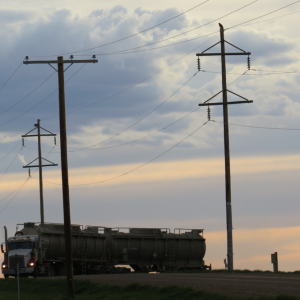Raptor Ecology and Conservation Team (REACT): Dr. Erin Bayne, Cameron Nordell, Jesse Watson, Melynda Johnson, Adam Moltzahn, and Janet Ng
March 2016
Executive Summary
The Ferruginous Hawk (FEHA) has been listed as an Endangered Species under the Alberta Wildlife Act by the provincial government since 2006 (Alberta FEHA Recovery Team 2009); and were re-listed as a Threatened species under Schedule 1 of the Species at Risk Act (shorthand: SARA) by the federal government in 2010 (Government of Canada 2013).
• Habitat loss and degradation is considered one of the most likely causes of their declines and is one of the highest priority corrective actions listed in the 2009-2014 Alberta Recovery Plan for FEHA. This document summarizes the status of FEHA in Alberta and reports on how the demographic consequences of FEHA living in prairie Canada may be related to energy sector development.
• Four years of data on density, nest success, nest reuse, juvenile survival, and movement of FEHA are described in this report with an emphasis on evaluating how FEHA could potentially react to infrastructure and human activity associated with the energy sector.
• Overall, density of FEHA is similar in areas with high versus low energy development when controlling for other factors such as the amount of grassland and spatial location.
• Reproductive success was the same in areas with high natural gas well density relative to areas with no or low natural gas well density. There was a weak trend towards reduced reproductive success in areas with high oil well density. Overall, reproductive success was at the high end for FEHA with 70% of nesting attempts resulting in young fledging from the nest.
• Reduced reproductive nest success in areas with high oil well density seems to result in slightly less reuse of nests compared to nests in areas with fewer oil wells. However, this pattern is also quite weak. There is no evidence that any changes in nest success are caused by reductions in foraging success or changes in predators.
• The mechanism causing this slight difference in reproductive success in relation to heavy oil is not fully understood but may be caused by human disturbance around nests. There was weak evidence that being near roads resulted in different nesting behaviour than birds far from roads. However, FEHA show large individual variation in their response to disturbance by people. Similarly, habitat selection by hawks is highly variable among individuals, suggesting some are more tolerant of human disturbance than others.
• Current setback distances and timing restrictions are designed to reduce the chance of disturbing a hawk at their nest. If the goal is to reduce the chance of disturbance to close to zero the current distance of 1km is reasonable. However, when we visited nests we typically approach within 500m with a very low probability of FEHA adult flushing. This suggests that low intensity energy sector activities, such as well maintenance, could be done during the breeding season at distances >500 m with a low chance of disturbing the birds.
• There is considerable variation between individuals in their sensitivity to human disturbance however. This potentially provides some flexibility whereby individual hawks could be assessed using protocols used for nest monitoring to determine their sensitivity prior to engaging in 3
industrial activities around the nest to see what individual birds are willing to tolerate
• Many natural nesting sites are being lost each year, mainly due to weather. FEHA nesting efforts are doing very well on platform nests although predation and weather remain issues. Recommendations on how to predator-proof and weather-proof new platforms are discussed.
• Juvenile mortality the first two weeks after leaving the nest is approximately 40%. Most mortalities are caused by predation or starvation. However, about 20% of mortalities can be attributed to human causes, which generally are vehicle collisions and collisions with powerline/ transmission line infrastructure.
• Adult hawks prefer to roost on the tallest infrastructure available. There is slightly less use of oil wells relative to natural gas wells and distribution poles.
• Energy sector development through the creation of wells does not seem to affect FEHA ability to find food to raise their young. Nests in areas with significant natural gas development had similar success compared to nests in less disturbed areas.
• Vertical infrastructure creates positive and negative effects for FEHA. There is no evidence that adult FEHA in our study area died from electrocution or collisions (although this did occur on migration and the wintering grounds). Instead, this infrastructure tends to be used as perches and sometimes for nesting. On the other hand, young FEHA learning to fly did die from collisions with power lines.
• Roads and traffic associated with energy sector development are killing young hawks. No adults in prairie Canada were confirmed to be killed by vehicle collisions, but adults on migration and wintering areas were hit and killed by cars. Reducing speeds and travel restrictions post-fledging and pre-migration needs to be investigated as a mitigation option.
• Overall, there is no one factor that is causing the decline of FEHA in prairie Canada. Loss of natural nest sites is occurring as trees age and extreme weather increases, resulting in damaged or fallen trees. Some individuals are being killed by traffic and vertical infrastructure. Whether this mortality is additive or compensatory to that caused by natural processes requires more investigation.
• The final step in this project is to integrate all of this information into a habitat specific demographic model and to assess the sensitivities of each demographic parameter along with estimates of nest site availability and how this is changing over time. Ultimately, this is needed to prioritize recovery actions and to determine if changes made on the breeding grounds will be sufficient to help this species recover.

# 914151 / 09-9202-50 / 13-AU-ERPC-02